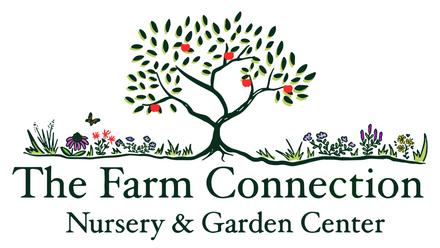Sourwood, Bare Root
Midsummer Blooms & Vibrant Fall Color
Sourwood, Bare Root - Bare Root / 2-3' Seedling is backordered and will ship as soon as it is back in stock.
Couldn't load pickup availability
Delivery and Shipping
Delivery and Shipping
Make sure to thoroughly review our entire "Shipping, Returns, Refunds, and Our Guarantee" page for all relevant details about ordering from our store.
Making a purchase from our store constitutes an agreement to all the conditions outlined in those policies.
We appreciate your support and look forward to being your favorite plant provider!
Subscribe to our newsletter
Sign up for exclusive offers.
Sourwood (Oxydendrum arboreum)
Sourwood is a stunning native understory tree prized for its brilliant fall foliage, pendulous summer blooms, and its role as a vital nectar source during a seasonal gap. Native to the southeastern U.S., it thrives in acidic, well-drained soils and adds year-round ornamental and ecological value. Its fragrant, bell-shaped white flowers bloom in mid to late summer, attracting bees at a time when few other trees offer nectar—making it a key pollinator support species and the source of the celebrated Sourwood Honey. A standout in forest edges, native gardens, and food forests, sourwood offers beauty, function, and pollinator habitat in one.
Key Characteristics
• Critical nectar source during summer nectar gap
Sourwood blooms in July and August, when most native trees have long finished flowering. Its blooms produce abundant nectar for native bees, bumblebees, and honeybees, making it one of the few dependable tree-based nectar sources in midsummer woodland ecosystems.
• Source of prized monofloral Sourwood Honey
The flowers are so nectar-rich that honeybees produce a distinctive light, buttery honey from it, known for its unique flavor and clarity. In regions where sourwood is dominant, it’s considered one of the most sought-after honeys in North America.
• Outstanding fall color and four-season beauty
In autumn, sourwood's foliage turns brilliant scarlet, crimson, and orange, often rivaling or exceeding that of maples. Paired with its mid-summer blooms and elegant form, it provides visual interest through every season.
• Understory-friendly and fits into food forests
Naturally adapted to forest edges and acidic woodlands, sourwood fits well into understory and mid-canopy layers of food forests, native hedgerows, and permaculture guilds. It pairs beautifully with blueberries, mountain laurel, and oaks in acidic soils.
• Cultural and traditional medicinal use
Sourwood leaves and bark were historically brewed as a tea for fevers, inflammation, and digestive issues by both Indigenous peoples and early settlers. While not commonly used in modern herbalism, it holds cultural value and a long tradition of medicinal use.
Product Details
• Native range: Southeastern United States
• Plant life cycle: Deciduous tree
• Sun requirements: Full sun to part shade
• Soil requirements: Medium-dry to medium; prefers acidic, well-drained soils
• Mature height: 20–40 feet
• Bloom time: Mid to late summer (July–August)
• Bloom color: White
• USDA Hardiness zones: 5–9
Sourwood is a botanical gem that offers critical support to pollinators during midsummer, brilliant autumn beauty, and a long-standing cultural legacy. Ideal for native plantings on acidic soils and layered, biodiverse landscapes.
-
Sun RequirementsFull Sun, Part Sun/Shade
-
Soil RequirementsMedium, Medium-Wet, Medium-Dry
-
Bloom ColorWhite
-
Bloom TimeJune, July, August
-
USDA Hardiness ZonesZone 5, Zone 6, Zone 7, Zone 8, Zone 9+
-
Native StatesPennsylvania, Ohio, Indiana, Kentucky, Tennessee, West Virginia, Virginia, North Carolina, South Carolina, Georgia, Alabama, Mississippi, Arkansas
Payment & Security
Payment methods
Your payment information is processed securely. We do not store credit card details nor have access to your credit card information.




